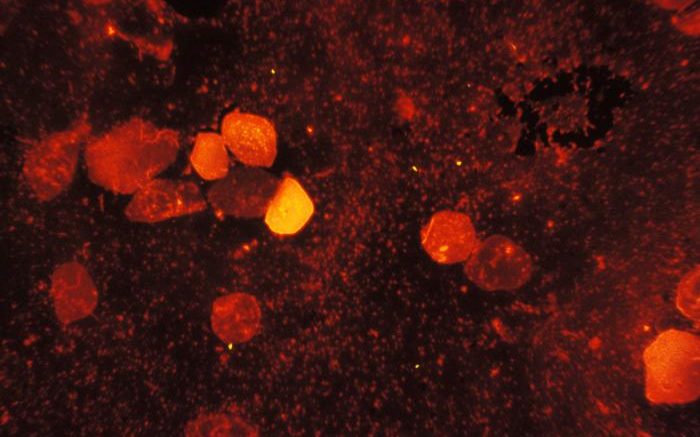More people received life-saving treatment for tuberculosis (TB) in 2018 than ever before, largely due to improved detection and diagnosis. Globally, 7 million people were diagnosed and treated for TB -- up from 6.4 million in 2017 -– enabling the world to meet one of the milestones toward the United Nations political declaration targets on TB.
The World Health Organization (WHO)’s latest Global TB Report says that 2018 also saw a reduction in the number of TB deaths: 1.5 million people died from TB in 2018, down from 1.6 million in 2017. The number of new cases of TB has been declining steadily in recent years. However, the burden remains high among low-income and marginalized populations: around 10 million people developed TB in 2018.
“Today we mark the passing of the first milestone in the effort to reach people who’ve been missing out on services to prevent and treat TB,” said Dr. Tedros Adhanom Ghebreyesus, WHO director-general. “This is proof that we can reach global targets if we join forces together, as we have done through the Find.Treat.All.EndTB joint initiative of WHO, Stop TB Partnership and the Global Fund to Fight AIDS, TB and Malaria."
WHO’s latest Global TB Report highlights that the world must accelerate progress if it is to reach the Sustainable Development Goal of ending TB by 2030. The report also notes that an estimated 3 million of those with TB still are not getting the care they need.
In many countries today, fragile health infrastructure and workforce shortages make it difficult to provide timely diagnosis and the right treatments for TB. Weak reporting systems are another problem: health providers may treat people but fail to report cases to national authorities, leaving an incomplete picture of national epidemics and service needs. Further, up to 80 per cent of TB patients in high burden countries spend more than 20 per cent of their annual household income on treating the disease.
Ghebreyesus added: “Sustained progress on TB will require strong health systems and better access to services. That means a renewed investment in primary health care and a commitment to universal health coverage.”
Last month heads of state agreed a political declaration on Universal Health Coverage at the United Nations in New York, highlighting the importance of expanding service coverage and committing specifically to strengthen efforts to address communicable diseases like HIV, TB and malaria.
One way to improve coverage is to adopt more people-centered comprehensive approaches. Better integrated HIV and TB programs already mean that two-thirds of people diagnosed with TB now know their HIV status. In addition, more people living with HIV are taking treatment.
But child health programs still do not always focus adequately on TB: half of children with TB do not access quality care and only a quarter of children under the age of 5 in TB-affected households currently receive preventive treatment.
Drug resistance remains another impediment to ending TB. In 2018, there were an estimated half a million new cases of drug-resistant TB. Only one in three of these people was enrolled in treatment.
New WHO guidance aims to improve treatment of multidrug resistant TB, by shifting to fully oral regimens that are safer and more effective. The guidance is part of a larger package of steps released on 24 March 2019 -- World TB Day -- to help countries speed up efforts to end the disease.
“WHO is working closely with countries, partners and civil society to accelerate the TB response,” said Dr. Tereza Kasaeva, director of WHO’s Global TB Program. “Working across different sectors is key if we are to finally get the better of this terrible disease and save lives.”
The fight against TB remains chronically underfunded. WHO estimates the shortfall for TB prevention and care in 2019 at $3.3 billion. International funding (which is critical for many low- and middle-income countries) amounts to $0.9 billion in 2019, with 73 percent coming through the Global Fund. Last week’s successful replenishment of the Global Fund will be critical to strengthen international financing.
The largest bilateral donor is the U.S. government, which provides almost 50 percent of total international donor funding for TB when combined with funds channeled through and allocated by the Global Fund.
There is an urgent need for funding of TB research and development, with an annual shortfall of US$1.2 billion. Priority needs include a new vaccine or effective preventive drug treatment; rapid point-of-care diagnostic tests; and safer, simpler, shorter drug regimens to treat TB.
“To accelerate TB research and innovation, WHO is developing a global strategy,” adds Kasaeva. “We are collaborating with academia, research networks such as the BRICS TB Research network, and partners including the Bill & Melinda Gates Foundation, UNITAID and others in a quest to bring innovations into practice to break the trajectory of the TB epidemic”.
Source: WHO

Be the first to comment on "7 Million Receive Lifesaving TB Treatment but 3 Million Still Miss Out"